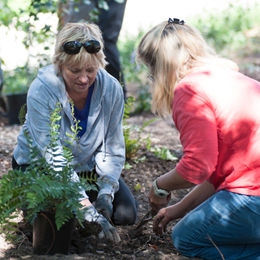
The relationship between a city’s urban forestry program and non-profit organizations has evolved in the last several years. More often than not, non-profit organizations and urban forestry programs have forged partnerships to build support for important projects, help with funding, and advocate for the community.
Non-profit organizations are often made up of citizens who are passionate about their urban forest and range from national organizations, like Keep America Beautiful and the Arbor Day Foundation, to locally run programs, like TreePeople in Los Angeles and the Cleveland Tree Coalition in Ohio. Because their missions are framed as helping a broader cause (rather than the nuts and bolts of individual projects), non-profits tend to garner more citizen support for objectives than the city can alone. Non-profits also do not need to go to bid, so they can be more nimble with sources of funding.
Getting To Know A Non-Profit
The first step in forming a partnership with a non-profit is to identify organizations whose missions match the work your urban forestry program is trying to achieve. In order to get the most out of a partnership, an urban forester should seek out non-profits in his or her area with shared interests and objectives. Get creative by considering non-traditional connections, like non-profits that focus on local watersheds, student coalitions, or environmental clubs. Urban forests can benefit a variety of missions.
At times, it is easier for a non-profit to advocate more freely than an urban forester in policy or funding situations. For example, at budget times, non-profits can support or block funding for a tree program. It is easier for an elected official to support a program when their constituency is advocating for it, and there is a need for elected officials to be responsive to citizens.
Additionally, non-profits can advocate for changes in code that benefit tree programs. In some instances, code changes come about because citizens become involved in opportunities to assure the welfare of a tree or groups of trees or species that bring value to a community.

Non-profits may help secure funding for a project that benefits the community's urban forest. This could be through a grant process that may only be available to a 501c3 organization. Together with the urban forester, grants can be written and once awarded, managed by the non-profit to benefit the community.
Partnering with a non-profit organization can be intimidating and time-consuming. Davey Resource Group (DRG) is well-connected with non-profit groups and can help assist with this partnership that will help further your program.
Reach Out To Your Local DRG Expert To Learn More.



